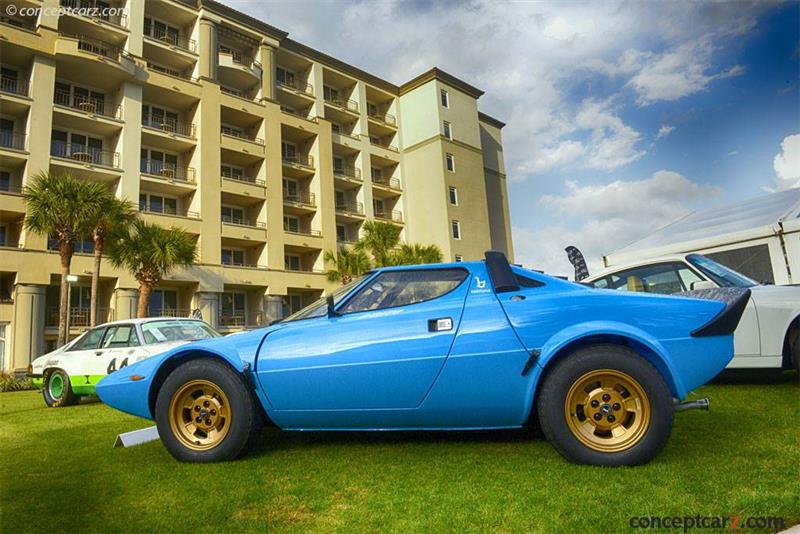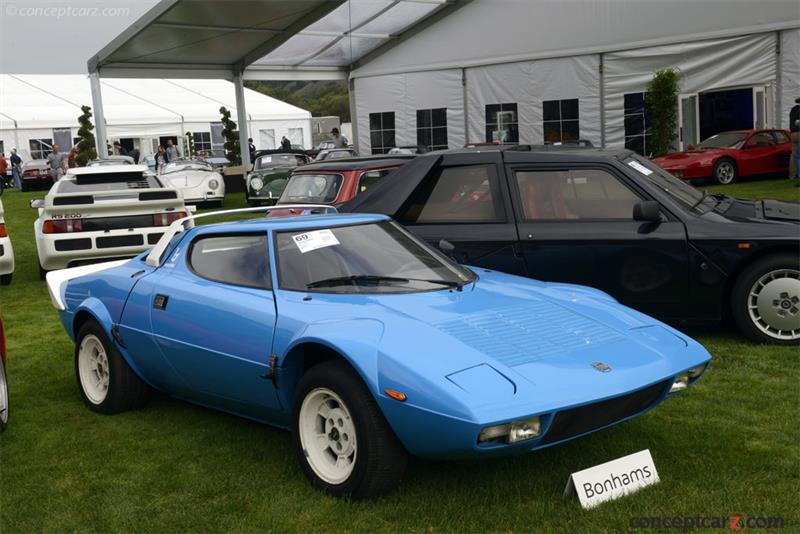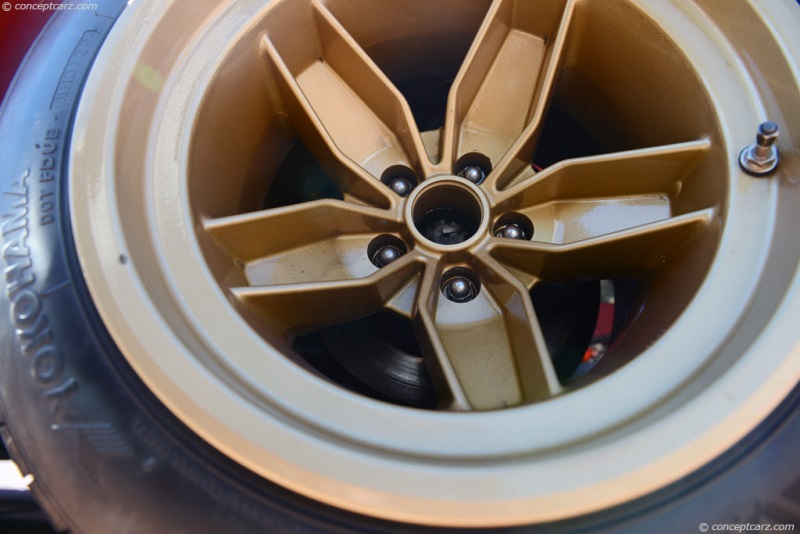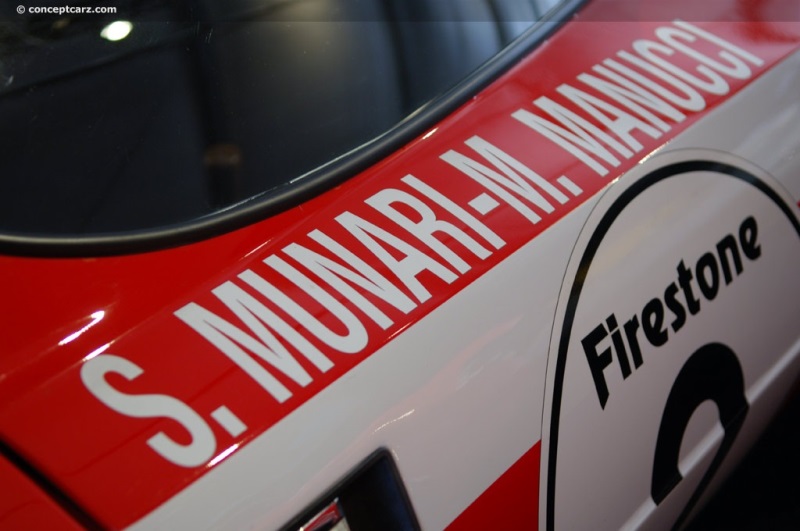The Lancia Stratos holds the distinction of being the first car from a major manufacturer conceived specifically for rallying. The Bertone-styled production Stratos of 1972 was powered by the 2.4-liter Ferrari Dino V6 engine, housed in a steel monocoque body tub clad in fiberglass coachwork. The road-going, limited-production 'homologation special' version was called the 'Stradale' and had a top speed of 225 km/h. The works Group 4 rally cars were considerably more powerful. 
Coupe
Chassis #: 829 ARO 0011948
Engine #: 142536
View info and history
Auction entries : 1The Stratos Zero Concept, initially called 'Stratoline,' was introduced in 1970 at the Turin Motor Show wearing a design penned by stylist Marcello Gandini under the direction of Nuccio Bertone. The wedge-shaped design had a mid-engine placement and stood a mere 33 inches tall. It had a lat windshield that extended over the passenger compartment and was based on the Lancia underpinnings. The Stratos Zero Concept generated much enthusiasm and caught the attention of Ugo Gobbato, Lancia's managing director, and Cesare Fiorio, head of the company's motorsports division. Fiorio envisioned the car to be purpose-built for rally racing, wearing a similar design to the concept, and successful enough to revive the company's racing image. FIA homologation requirements stated that 500 examples were required to be built to qualify for Group 4 sports car racing. Fiorio, with approval from management, began work on accomplishing this goal.A new prototype, following the design cues of the Stratos Zero, was built the following year and called the Lancia Stratos HF or 'High-Fidelity.' The short wheelbase vehicle wore a lightweight design by Bertone and had a central steel monocoque, rear Subframe of steel tubes, a fiberglass body, and a wraparound windshield. A 2.4-liter V-6 engine developing nearly 200 horsepower was sourced from the Ferrari Dino.During the 1972 and 1973 seasons, Lancia tested and perfected the design in several races in the prototype class. It received its officiant homologation status on October 1st, 1974, for the 1974 Group 4 World Rally Championship. It was immediately successful, and for the following five years, the Stratos dominated rally racing, recording more than 80 international wins. The first victory came at the hands of Sandro Munari at the October 1974 San Remo Rally. It won the World Rally Championship in 1974, 1975, and 1976. It won the 1974 Targa Florio, the Tour de France Automobile five times, and three editions of Giro d'Italia automobilistico. Even after its factory campaign was over, the Stratos continued to be raced with success by privateers, helping Sandro Munari to the WRC Drivers' Championship in 1977 and even winning the Monte Carlo Rally in 1979.
Coupe
Chassis #: 829AR0 001880
View info and history
Auction entries : 1The Lancia Stratos HF Stradale, or street version, was slightly detuned for reliability and received a few concessions to civility but retained a large amount of its rally car roots. Similar to the competition version, the Stradale was equipped with a Ferrari Dino engine, five-speed manual gearbox, rear-wheel drive, fully independent front and rear suspension, four-wheel ventilated brakes, and even the helmet holders beneath the side windows. Changes included a revised rear suspension with the double wishbones replaced by McPherson struts, and the body was formed from fiberglass instead of aluminum. The rally cars had a slightly more aggressive body kit. Production continued through 1975, when approximately 492 examples were made, including around 50 competition examples. Homologation for Group 4 required that 500 examples be built within a 24-month period, but in practical terms, this did not require 500 completed cars, but rather enough chassis and components to complete that number. Production began on July 1st, 1972, and only 183 examples were completed by the end of 1974. The FIA determined that enough completed body shells and components existed to satisfy Group 4 Homologation. Bertone at its Grugliasco Works manufactured the cars and then shipped them to Lancia, who handled final assembly at the Chivasso plant. 
Coupe
Chassis #: 829AR0 001672
View info and historyA Turbocharged Group 5 version was later created but did not enjoy the same success as its Group 4 sibling.
by Daniel Vaughan | Jun 2020
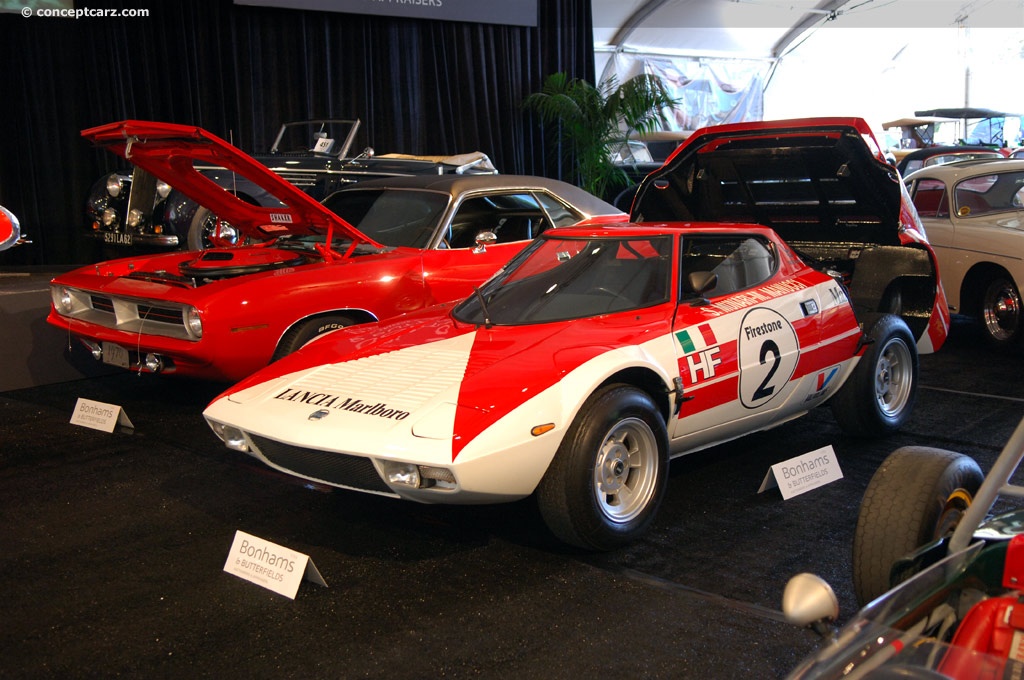
Coupe
Chassis #: 829 ARO 0011948
Engine #: 142536
View info and history
Auction entries : 1
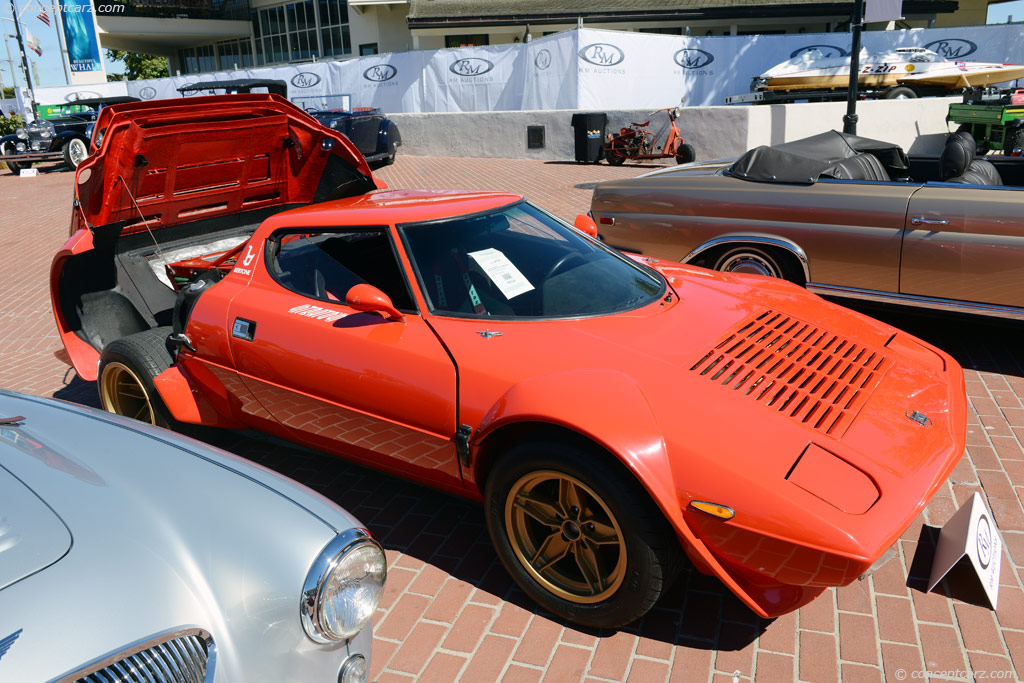
Coupe
Chassis #: 829AR0 001880
View info and history
Auction entries : 1
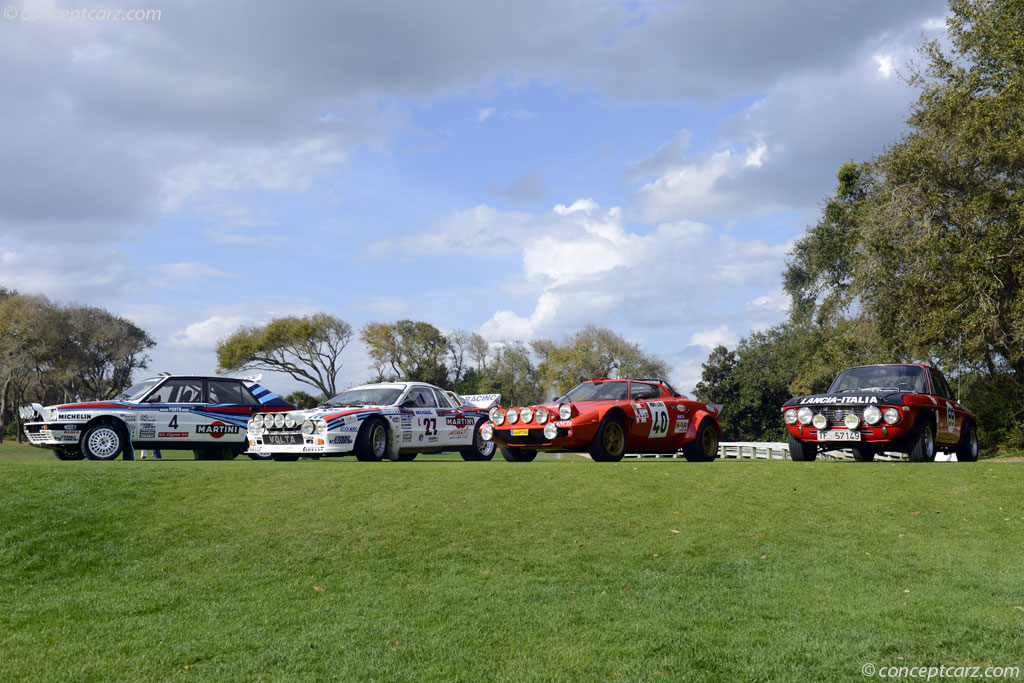
Coupe
Chassis #: 829AR0 001672
View info and history
by Daniel Vaughan | Jun 2020
Related Reading : Lancia Stratos History
A big success by any standard both in and out of competition, the Lancia Stratos was developed as a homologation Special for European rallying. After production ceased, it became a cult car and is now highly-priced as the modern classis it is. Conceived strictly for rallying, the Lancia Stratos, however, makes an exciting road car, though it is very far from GT standards in both luxury and refinement. The....
Continue Reading >>
Continue Reading >>
1975 Lancia Stratos HF Vehicle Profiles
Recent Vehicle Additions
Related Automotive News

World's greatest marques set to unveil latest models at Salon Privé
Land Rover, McLaren and Touring Superleggera among those to debut new cars at Blenheim Palace
Salon Privé Week has become a leading destination for launches and debuts
Established marques will line up alongside a new generation of automotive brand...

The Best Of Lamborghini At London Concours 2020
The London Concours has announced its Great Marques Lamborghini display, celebrating the very best from SantAgata
Line-up includes icons early pioneers like the 400GT and iconic Miura, through to the Diablo SV, Murcielago and Aventador SVJ
Les...

Gripped By Quattro – Celebrating Forty Years Of The Audi All-Wheel Drive Road And Rally Icon
Forty years of quattro
Harald Demuth – Developing the new secret Audi rally weapon
David Ingram – Hoisting the quattro high above the capital
Phil Short – Winning in a rally quattro first time out
Graham Rood – Plotting the route to victor...

Fiat Chrysler Automobiles key player in the Classic Days in Germany
Concours delegance, parades and special races on roads closed to traffic this is the packed programme reserved for the historic cars arriving at the medieval Dyck castle
Alfa Romeo takes part with four precious models the prototype 750 Competizi...

The Champion in Touring Car Racing : The BMW M3
In August 1985, a rumour surfaced in motor magazine Auto-Deutschland which emanated from a new sports car. An A Group Car from BMW that was a thoroughbred racing car according to the rules but was also to be produced in a version licensed to drive on...




























